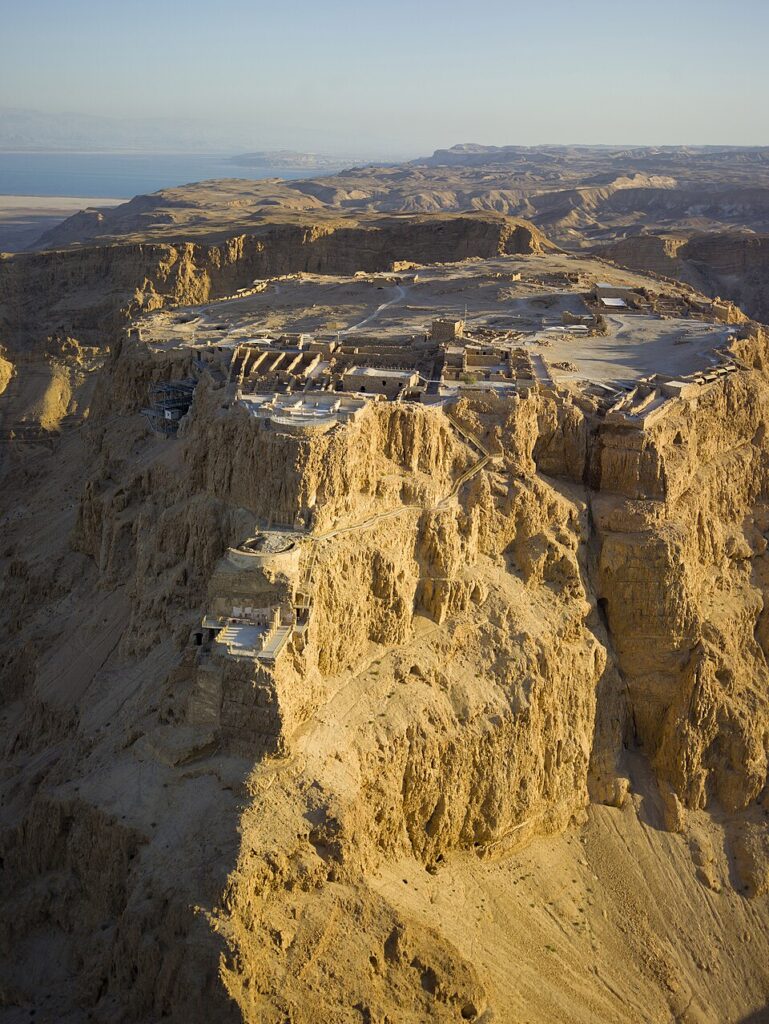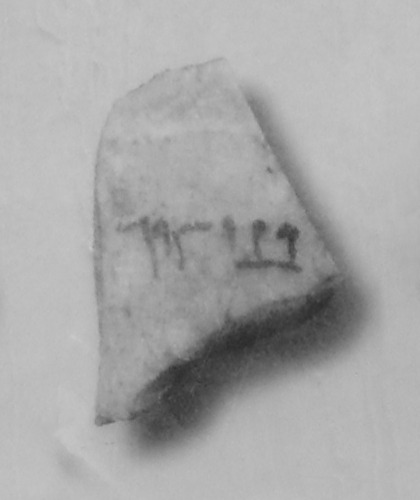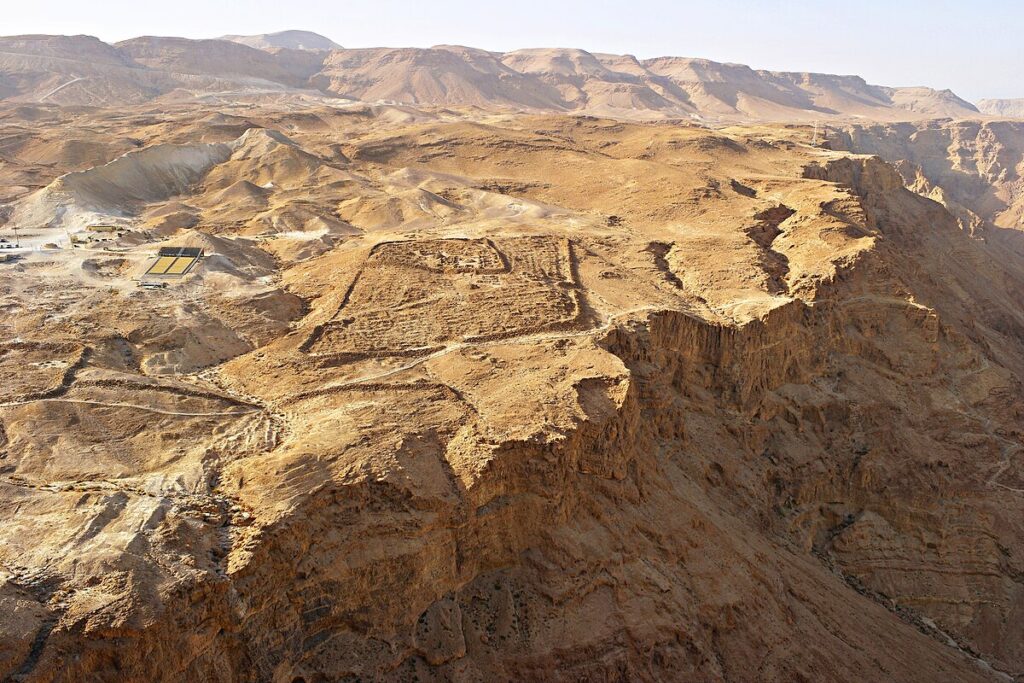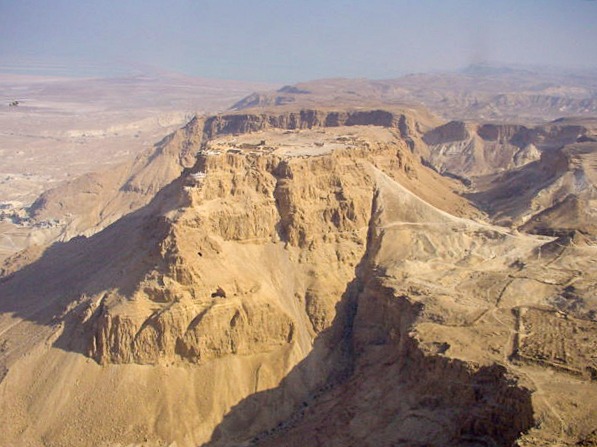Ask people what happened at Masada and a familiar story appears. The Romans built a ramp, breached the walls, and found that almost a thousand defenders had taken their own lives rather than surrender. That version comes from Josephus. It has power. It also has problems. Archaeology from the plateau and the siege works below now paints a different, more complicated finale. Some details in Josephus’ dramatic account fit the ground. Others do not. Recent fieldwork and new analyses sharpen those differences and suggest a faster, harder siege than many of us learned.
None of this reduces the site’s significance. The camps, the circumvallation wall, and the great ramp survive in exceptional condition. You can walk the lines the X Fretensis laid out. You can stand on the crest of the ramp and see how the Romans solved a topographical problem with sheer engineering. The question is what happened inside the fortress when the wall finally failed. Here is where text and trench pull in different directions.
Josephus’ story in brief
Josephus writes that in 72/73 CE, Governor Lucius Flavius Silva led the Roman Tenth Legion and auxiliaries to besiege Masada. He describes a circumvallation wall, a series of camps, and an earthen ramp against the western cliff. He says the Romans breached the wall with a siege tower and ram. Then, before the final assault, the rebel leader Eleazar ben Ya’ir rallied his people to choose death over slavery. According to Josephus, the defenders burned their possessions but left the storerooms untouched to prove they still had food. The tally he gives is precise: 960 dead, with two women and five children found alive to tell the tale.
Parts of this are consistent with what we see today. The siege system is real. The ramp is unmistakable. Yet the closer archaeologists have looked, the more friction they have found between page and place. That friction is important. It helps us separate what likely happened from what made a compelling scene in prose.
What the ground says
Excavations on the summit identified widespread fire damage across several buildings. If there had been one great bonfire of property, as Josephus implies, we would expect a single clear focus. Instead we meet multiple, separate burn layers in different rooms. Storerooms also show evidence of fire, including provisions that charred in place. That cuts against the idea that food stores were deliberately spared. It looks more like repeated, localised burning, not one theatrical blaze with carefully preserved granaries.
The human remains pose a sharper challenge. For a claimed death toll of nearly a thousand, the archaeology has not yielded mass graves or a concentration of skeletons on the scale the text suggests. A small number of skeletons were found on the summit and in a cave on the southern cliff. Later anthropological work has questioned whether some of these belonged to the rebels at all. This absence is not proof, but it weakens the case for a single, coordinated mass suicide as Josephus describes it.

A shorter, sharper siege
For years, guidebooks and even some scholarly summaries suggested the siege dragged on for many months, sometimes even “years”. Recent research disagrees. A Tel Aviv University–led team re-examined the Roman system with drones, high-resolution mapping, and 3D analysis. Their quantified study argues that the operation was swift. The garrison was small, the ramp had a natural spur to build upon, and the legion could raise a usable embankment and position a tower in weeks rather than seasons. That reading does not minimise Roman effort. It underlines Roman efficiency. A tight timeline also narrows the window for the defenders to stage complex, site-wide actions at the end.
Shorter siege, cleaner logistics, faster finish. Put those together and Josephus’ two long speeches on the eve of the end feel less plausible. It is hard to imagine the Romans breaking the wall, stepping back for the night, and returning to find a perfectly executed, fortress-wide suicide the next morning. A compressed schedule favours a messy end: pockets of resistance, fires set in more than one place, attempts to hide, attempts to flee, and Roman troops moving quickly while the breach still gave them momentum.
The numbers do not add up
Josephus tends to like round numbers. Nine hundred and sixty sounds authoritative. On the ground, the tally is absent. No mass grave has appeared within the Roman lines below either. Defenders might have thrown bodies over the cliff, or Romans might have dealt with remains in ways that left little trace. Still, the silence of the soil on this specific point has pushed many historians to read Josephus with greater caution. Scarcity of bones does not prove there was no mass death. Yet it does argue against the dramatic, centrally coordinated finale that has dominated popular retellings.
Names scratched on potsherds add a further twist. In a room near the Northern Palace, excavators recovered eleven ostraca, each with a single name, one reading “ben Ya’ir”. This find was long taken as physical support for Josephus’ claim that men drew lots to kill one another before the last survivor fell on his sword. An alternative view now carries weight: that these sherds served mundane functions such as rationing or assignment. The presence of names alone does not prove a lottery for death. It proves literacy and administration in a besieged community.

Fires, storerooms, and stagecraft
Josephus insists that everything was burned except food stores. Archaeology shows something else. Several storerooms did burn, and the burn pattern across the site is not a single, orchestrated pile but a scatter of separate blazes. This is what you would expect if defenders set fires in multiple spots under pressure, or if fighting lit rooms as the breach widened. The one detail that does align with Josephus is that food remained in quantity. Masada’s storage capacity was famously large. Abundant reserves do not require the rebels to have left neat granaries as a final message. The stores existed whether or not anyone curated them for effect.
Josephus’ rhetoric also demands attention. He writes for Roman readers as a survivor of a catastrophic war. He wants to condemn fanaticism, praise Roman power, and shape a moral out of defeat. A theatrical last act fits that agenda. It does not mean he invented the siege. It does suggest that the end he presents is a crafted scene rather than a neutral report.
What a Roman assault looked like here
Masada’s ramp is often shown as a monument to patience. The ground says otherwise. Much of the embankment rests on a natural spur. The Romans topped and widened it, then pushed a tower and ram up the slope. The circumvallation line below held the ring tight. Camps are standard rectangles with gates placed to control movement. The system kept men and supplies close, discouraged sorties, and allowed a concentrated push at the western wall. The efficiency of this landscape argues for a command that wanted the job done quickly, with minimal drift.
In that frame, it is easier to imagine the last hours as chaotic. Fires start. Families hide. A few try to slip down the cliffs. A group makes a final stand at a wall or gate. Some may take their own lives. Some may be killed by their neighbours. Some certainly die at Roman hands. That blend is uglier and less tidy than the written version. It is also more consistent with the spread of burn layers, the pattern of finds, and the limited human remains.

Why these corrections matter
Masada became a symbol in the twentieth century. Marches, oaths, and schoolbooks carried the story of heroic last resistance. Symbols matter. They also change when the evidence changes. The new reading does not erase courage. It replaces a single, dramatic gesture with a series of harder choices made under pressure. It also restores the Roman side to the story: a demonstration of imperial will and engineering designed to end a revolt decisively and quickly.
There is a broader lesson here. Text and archaeology rarely line up perfectly. When they diverge, the task is not to pick a winner and throw out the loser. It is to test each claim against what the ground preserves, to weigh motives, and to accept an ending that may lack the polish of a set speech. In that sense, the revised Masada is more human. It allows for panic and bravery, for fire and flight, for plans that failed and improvisations that worked.
Reading Josephus with a finer comb
Scholars have pointed out that Josephus gets some architectural facts wrong. He describes one palace where two stand. He inflates wall heights. He collapses separate fires into a single scene. He may also compress time at the end for dramatic effect. None of these errors invalidate his value as a source. They require calibration. His account of the siege works and the ramp, for example, has strong support in the landscape. His numbers and his last-act choreography do not.
It helps to remember that Josephus wrote with access to Roman reports and with an audience in mind. He had reason to emphasise order and meaning in a chaotic finale. Modern fieldwork offers a counterweight. When drones trace the siege line and analysts measure embankment volumes and work rates, the conversation changes from “could they” to “how long would it take”. That is where the recent “weeks, not years” conclusion lands.
What probably happened
Put the strands together and a plausible sequence emerges. The Romans completed the ramp and breached the wall. Fighting continued inside. Multiple fires broke out. Some defenders died by their own hands, some at the hands of neighbours, some under Roman blades. A few hid and survived. The Romans pressed their advantage, secured the site, and left a landscape that still speaks. The famous number fades. The speeches shrink. The courage and the cost remain.

Visiting with better questions
If you go, take the revised picture with you. The ramp is not a monument to years of toil. It is a lesson in speed and advantage. The camps are not footnotes. They are the operating base for a quick, decisive strike. On the summit, look for variation in burn layers and for rooms that tell different stories about the end. In the small finds, remember that a name on a sherd proves a person present. It does not tell you how he died.
Then walk the perimeter and imagine signals moving from tower to tower on the night the breach opened. Imagine the noise inside the walls. The archaeologist’s Masada is less dramatic than Josephus’ Masada. It is also more convincing. That should change how we teach the siege and how we use its memory.
Quick answers for common doubts
Did everyone kill themselves?
Probably not. The archaeology does not show a mass death on the scale or in the pattern Josephus gives. A mixed ending—suicides, killings, and Roman action—fits the evidence better.
Were the storerooms left untouched?
No. Several storerooms show burn damage. The idea that food was carefully spared as a message does not survive contact with the layers on the ground.
How long did the siege last?
New analysis of the siege system suggests weeks, not years. The ramp sits on a natural spur and the legion’s methods favoured rapid, concentrated work.
Do the ostraca prove a lottery for death?
No. The sherds prove names and administration. They can be read as ration markers or assignments. They do not, on their own, confirm the lots story.
Is Josephus useless then?
Not at all. He remains essential for the sequence and the Roman system. He is less reliable on the numbers and the final scene. Read him with a trowel in hand.
